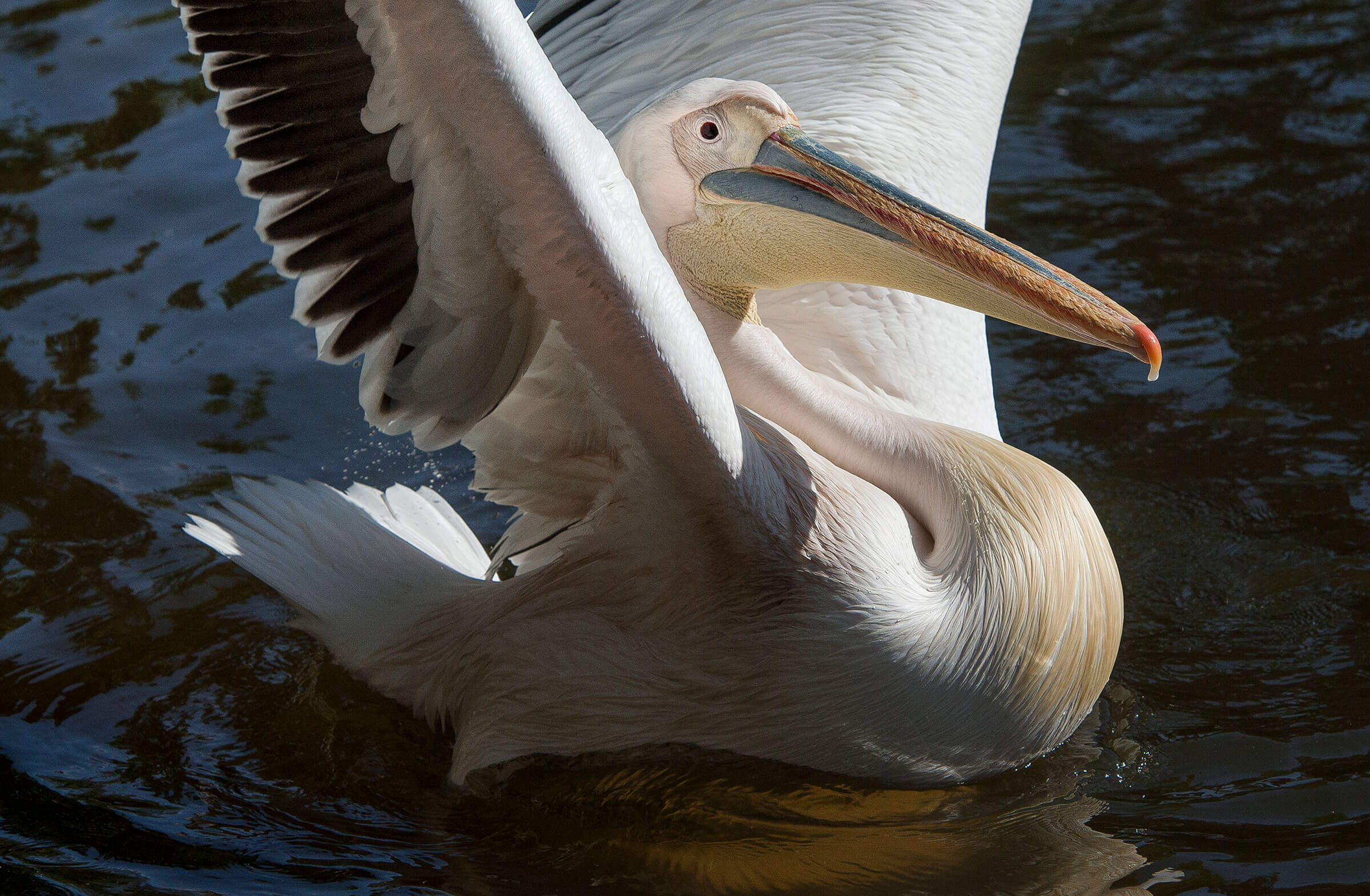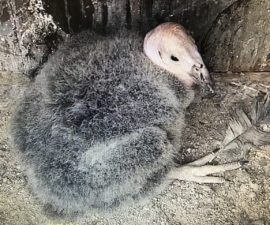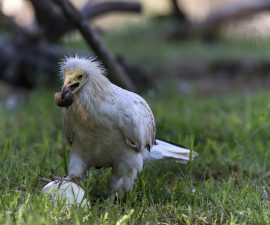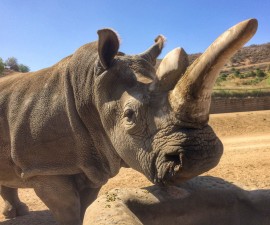“A wonderful bird is the pelican, His bill can hold more than his belican, He can take in his beak Food enough for a week, But I’m damned if I see how the helican.”
BY Peggy Scott
Photography by Ken Bohn
While this limerick, written in 1910 by Dixon Lanier Merritt, could be the best-known ode to the pelican and its bill, members of the Pelecanidae family have been celebrated in literature, art, and song since Ancient Egypt. From tomb paintings and hymns to royal heraldry and national currency, the pelican is a symbol of self-sacrificing parental dedication and introspection and has been lauded as much as that bountiful beak. Mike Houlihan, a keeper at the Zoo, would like to see that acknowledgement gain a foothold with today’s public. “They are amazing, intelligent birds, and some people don’t realize that,” Mike says. “Just watch them here at the Zoo, and you can see it.” What makes these birds worthy of this mouthful of praise? Here’s the scoop!
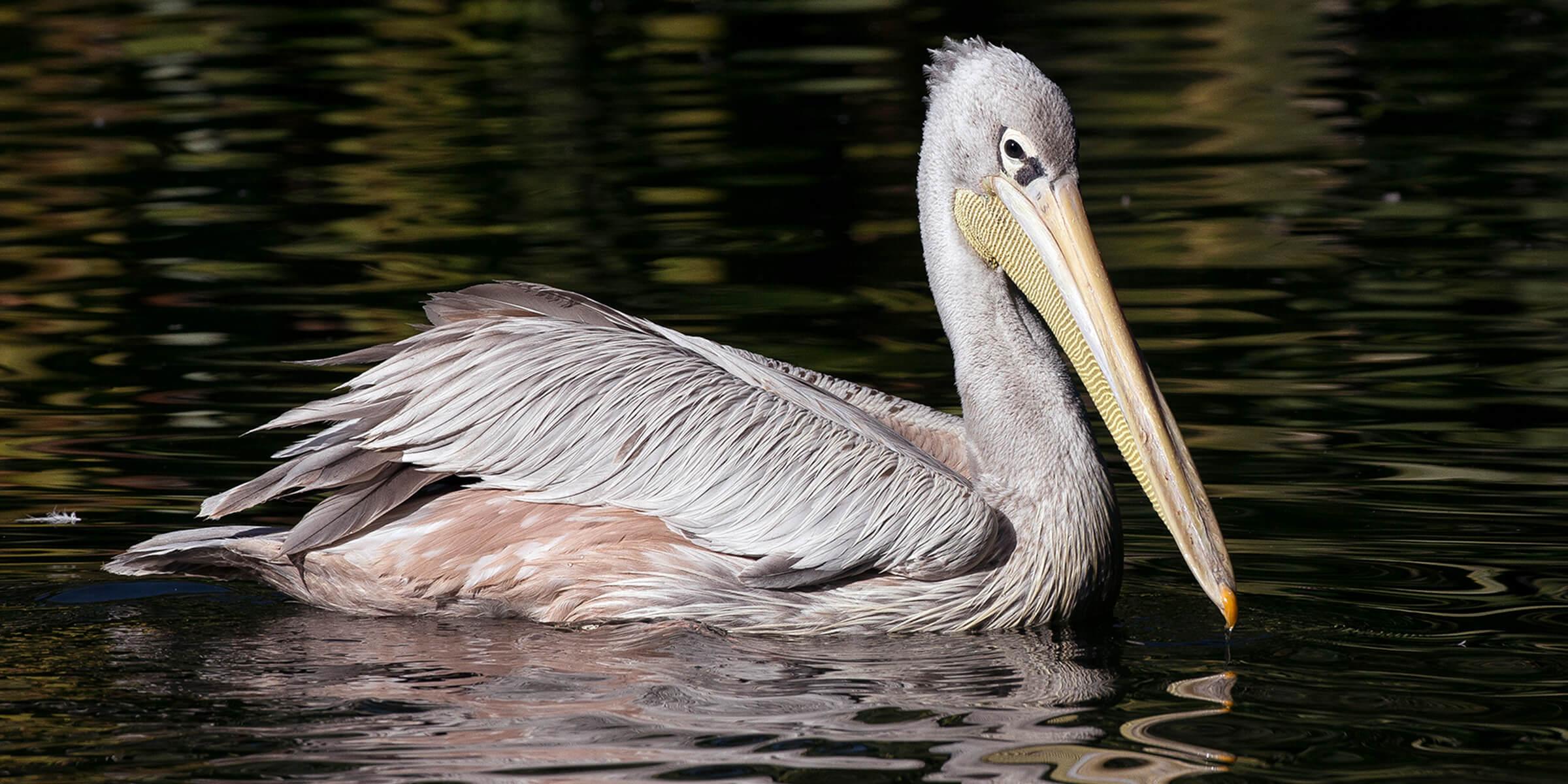
Equal Billing
There are seven living pelican species, one of which can be seen at the Zoo and three that are on exhibit at the Safari Park. The great white pelican Pelecanus onocrotalus, the second-largest species, is native to parts of Africa and the Mediterranean. Measuring up to 5.7 feet long and weighing 22 to 24 pounds, the great white pelican soars with a wingspan of 8 to 10 feet.
The largest species, the Dalmatian pelican Pelecanus crispus, weighs up to 26 pounds and has a wingspan of up to 10.5 feet. It can be found from southeastern Europe to India and China. Noticeably different from the great white, the Dalmatian sports gray legs and grayish-white plumage. Its nape feathers earn the Dalmatian its alternative name: the curly-headed pelican.
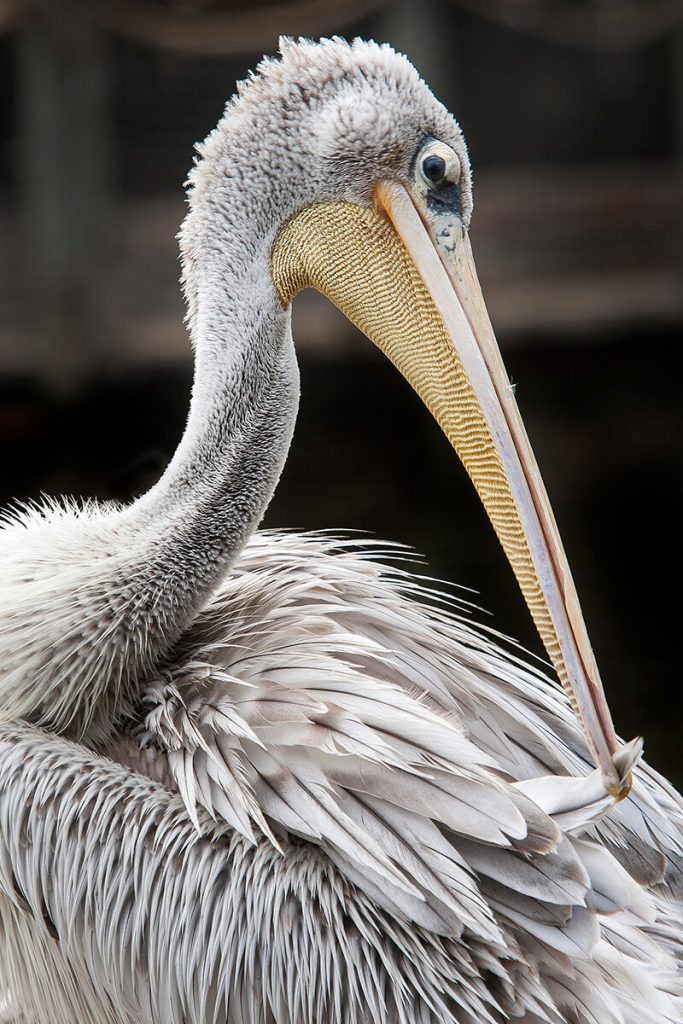
ON THE HOOK
The small hook at the end of a pelican’s beak, as seen on this pink-backed pelican, helps the bird keep its feathers tidy.
The more diminutive pink-backed pelican Pelecanus rufescens does, in some cases, feature pinkish feathers on its back to complement its gray-and-white plumage. Sized at over 4 feet in length, the pink-backed pelican weighs a dainty 8.6 to 15 pounds and uses its wingspan (up to 9.5 feet) to make its way through the skies over Africa, the Seychelles islands, and the southwestern Arabian peninsula. The pink-backed pelican also differs from its great white and Dalmatian brethren in its choice of homesteads: it nests in trees, while the great white and Dalmatian prefer ground nests.
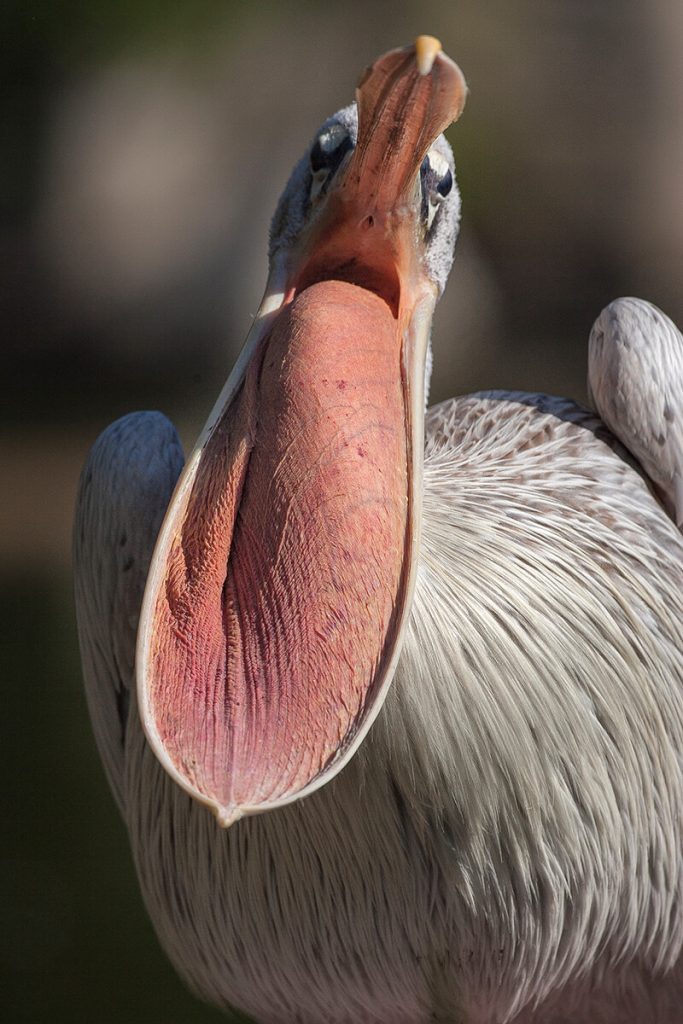
GETTING THE SCOOP
A pelican’s throat sac, like the one on this pink-backed pelican, serves as a net for the bird’s “scoop-and-gulp” eating method.
Pelicans are built for swimming—they have totipalmate feet, which means the webbing connects all four of their toes, even the back one. They also get a little help staying afloat: air pockets in the skeleton and beneath their wings provide added buoyancy, enabling them to float. But these birds are also quite at home in the air. Their giant wings can take them far—once they get their feet off the ground. To become airborne, pelicans must first run across the water, beat their wings, and pound the surface of the water with both feet in unison to get enough speed for takeoff.
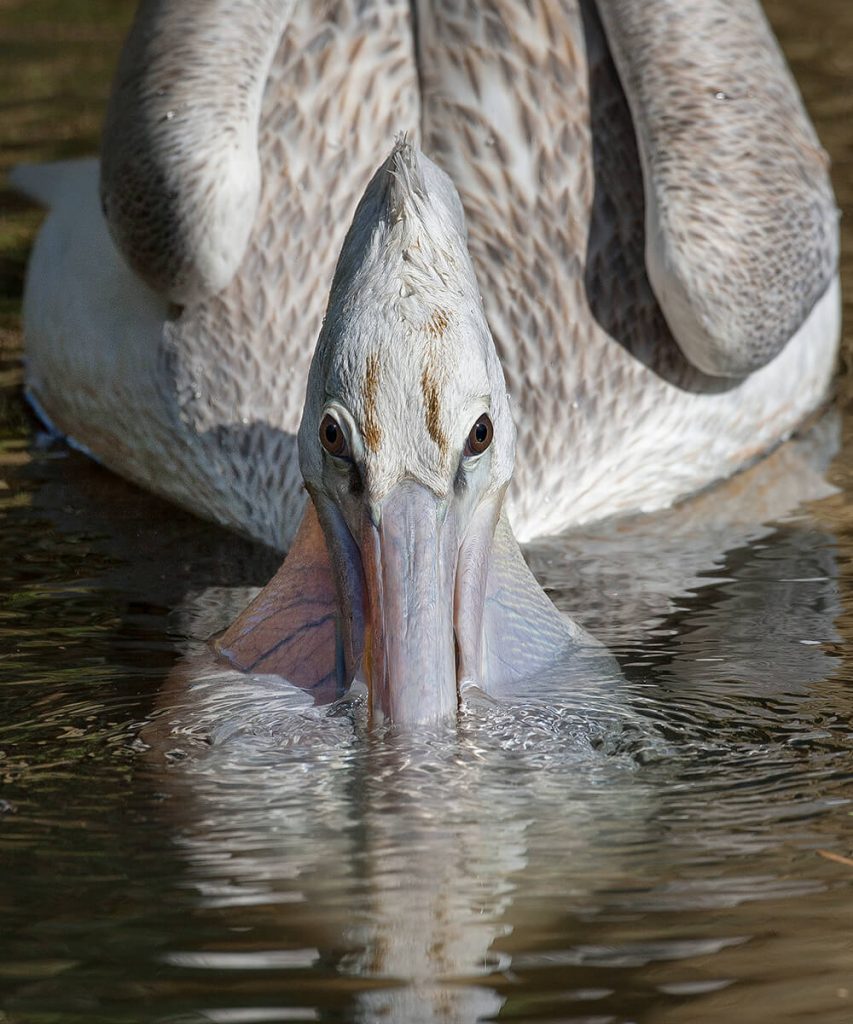
FILTER ON
The water in this pink-backed pelican’s submerged throat sac is being filtered out, leaving the bird with a tasty meal.
Pelicans are adept at co-parenting. During the breeding season, both male and female pelicans use their pouch to carry nesting materials such as twigs, grass, and feathers. The males take nesting materials to the females.
Other changes take place around breeding season as well. “The great whites get pinkish for breeding, and both male and females get their occipital [back of the head] crest,” explains Angela Ray, a lead keeper at the Safari Park. “The female’s facial skin turns pastel orange, and males get a pale yellow coloring on their face.”
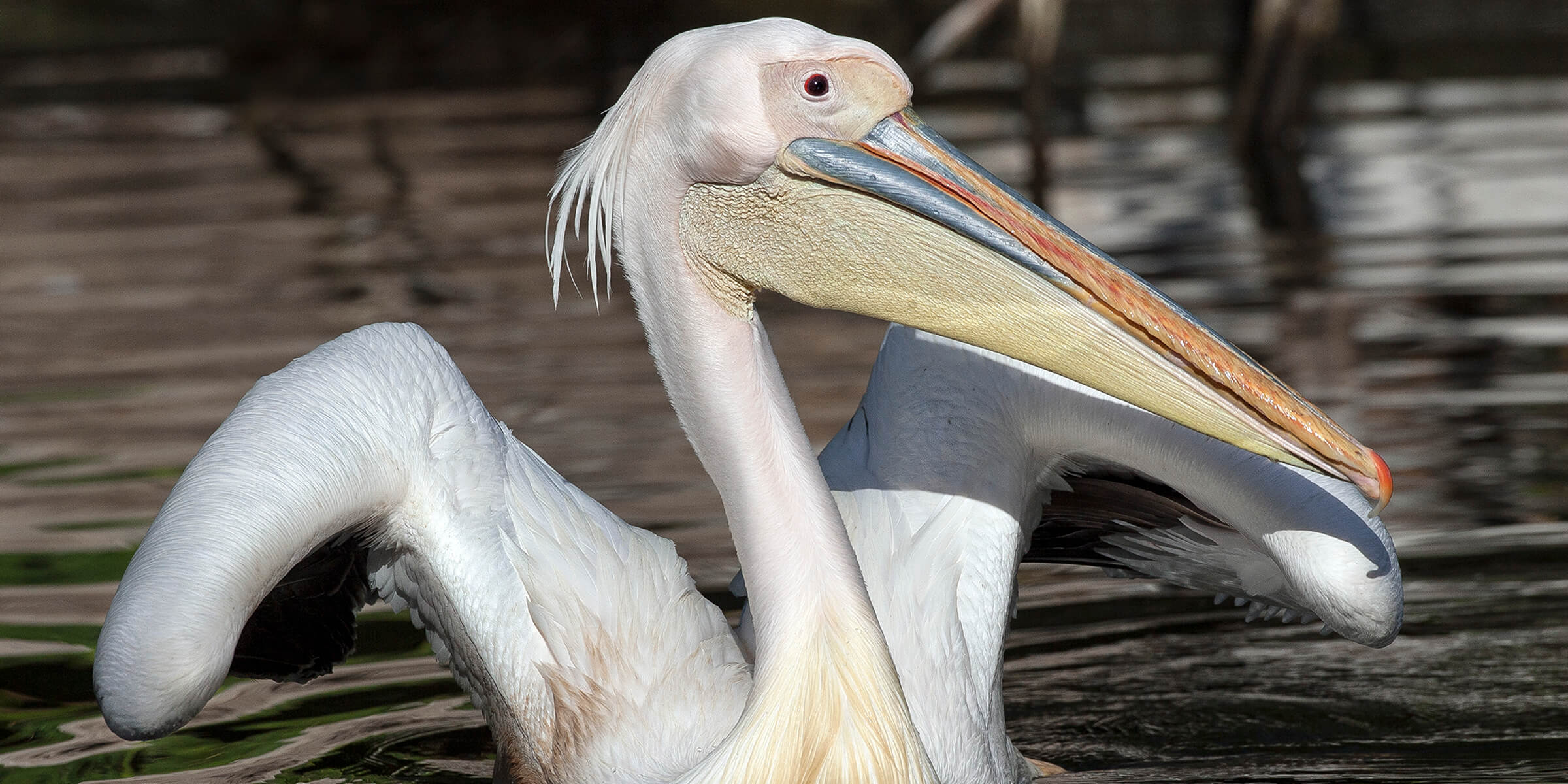
Grabbing a Bite
When it comes to dining, pelicans have different approaches—sometimes literally. A pink-backed pelican paddles along in the water, taking advantage of the cover provided by vegetation, and uses its bill to scoop up prey with a quick grab. Great white pelicans make it a group activity. “They hunt cooperatively,” Mike says. “Great whites will form a ring around their prey and surround it.” Dalmatians prefer to let someone else do most of the hard work. They follow cormorants, and while those diving hunters go to great lengths (depths, actually) to drive fish to the surface, the Dalmatian pelicans wait at the surface to seize their seafood.
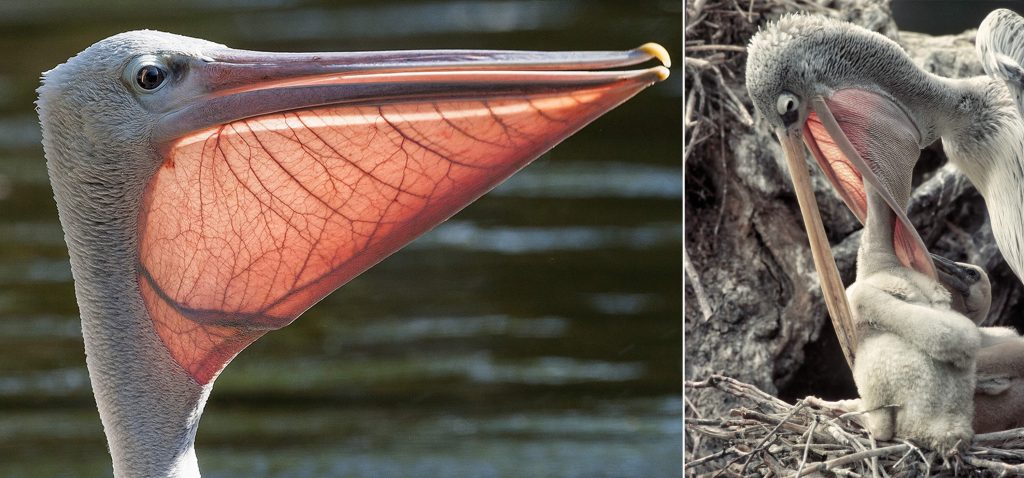
USING THE INNER-NET
(Left): A pelican’s throat pouch, which is made of skin and can be seen on this pink-backed pelican, is also called a gular pouch; (Right) When they are old enough to eat whole fish but not yet ready to hunt, pelican chicks, like this pink-backed pelican, may turn Mom or Dad’s throat pouch into a serve-yourself diner.
Once a pelican has its meal within reach, it puts that famous bill to use. “Their throat pouch is designed like a net,” Mike explains. “They drag it along the surface of the water to scoop up food. The water gets forced out, and they’ve got their dinner.” Should the scoop-and-gulp method fail, Mike notes that pelicans have a back-up plan. “Their beak has a little hook at the end of it that can be used to hook fish,” he explains. It’s a good thing the pelican is a prolific “fisherman,” as an adult bird can gulp up to four pounds of fish per day. And while the pouch is a great fish trap, it is not Tupperware: contrary to popular belief, pelicans do not store the catch of the day in their pouch for later.
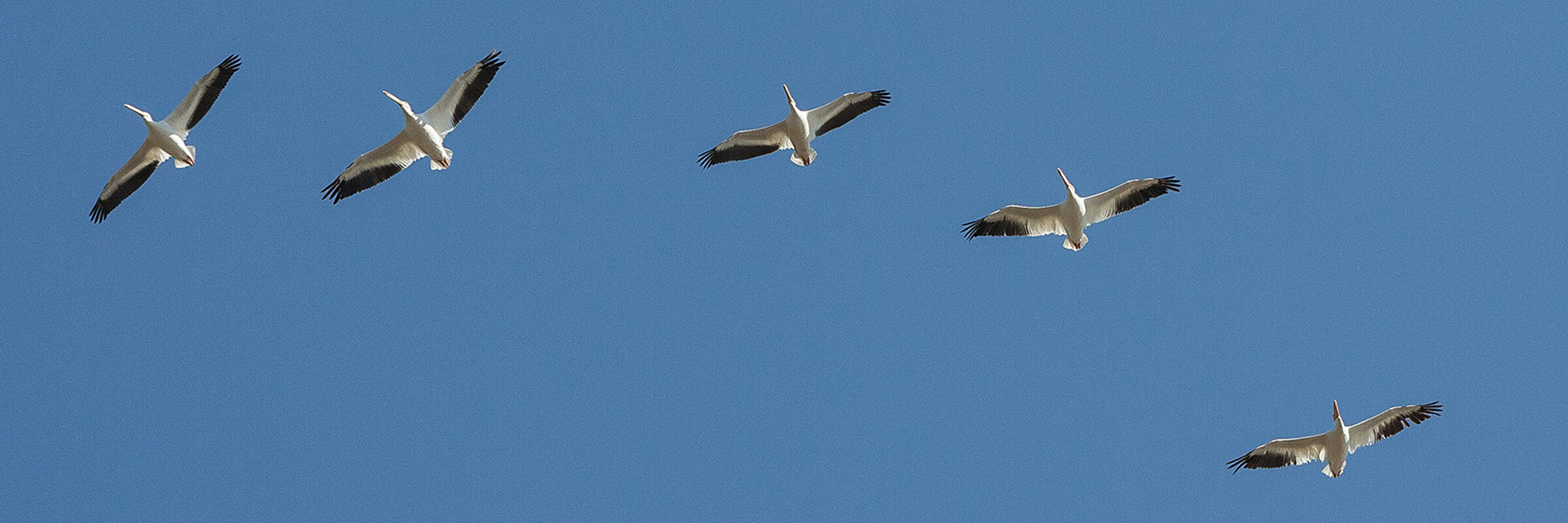
Pondering Pelicans Up Close
The Zoo and Park’s pelicans have bird lovers flocking to see them. At the Zoo, two great white pelicans, a male and a female, live in an exhibit on Park Way, just down the slope from the birds of prey aviaries. They share their home with cormorants, ducks, and other water birds.
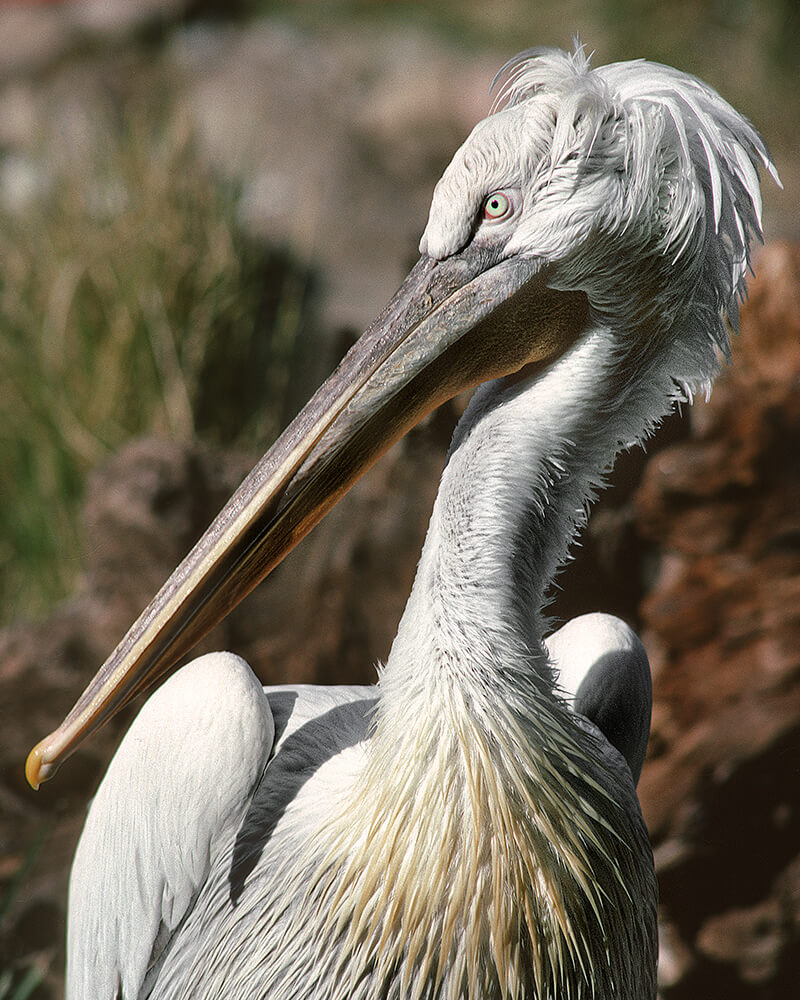
BIG BIRD
The largest species, the Dalmatian pelican Pelecanus crispus, weighs up to 26 pounds and has a wingspan of up to 10.5 feet.
At the Safari Park, pelicans have been one of its big success stories. Michael Mace, curator of birds at the Park, notes, “The Park has assembled the most comprehensive and productive collection of pelicans of the 225 AZA [Association of Zoos and Aquariums] members,” he explains, adding that the Park is the only AZA-accredited facility with great white, Dalmatian, and pink-backed pelicans. “We currently have 9 great whites with 19 hatches, 16 Dalmatians with 52 hatches, and 11 pink-backed pelicans with 58 hatches.”
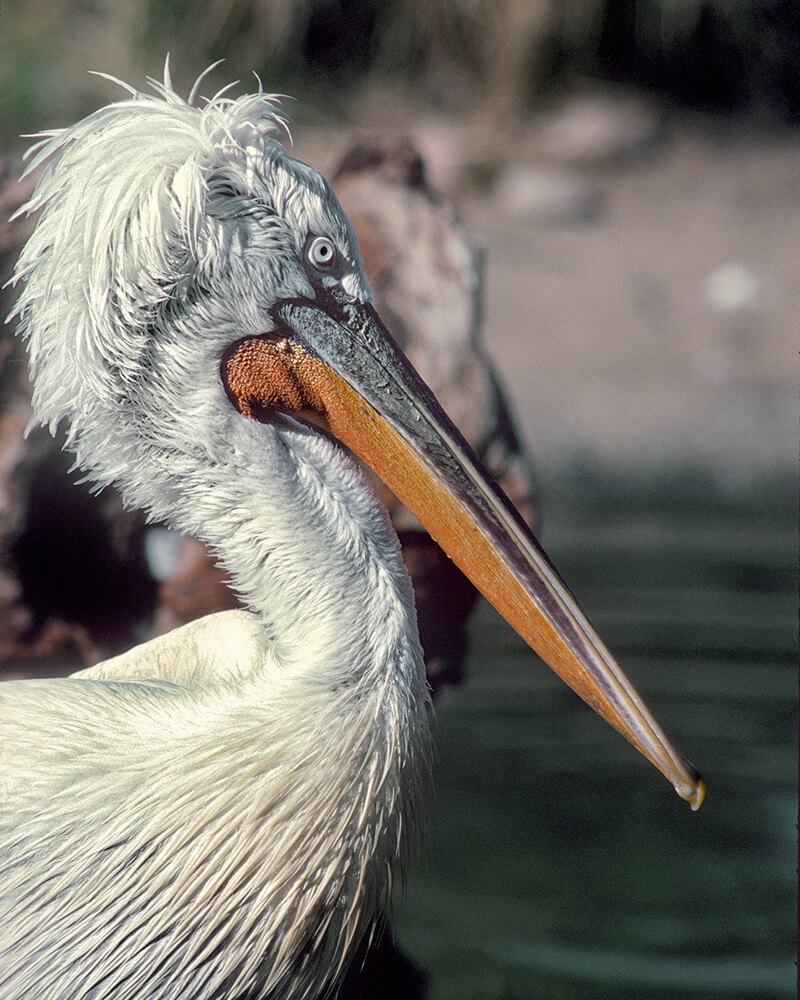
CURLY TOP
Due to the eye-catching plumage atop its head, the Dalmatian pelican is also known as the curly-headed pelican.
The Park’s Africa Tram experience offers the chance to see two of the three pelican species. In the South Africa field exhibit, Dalmatian and great white pelicans live together. Angela notes that both species are fond of nesting on the island in the exhibit, which is only accessible by boat, adding that during nesting season, keepers can “spend more time in the boat than on dry land.”
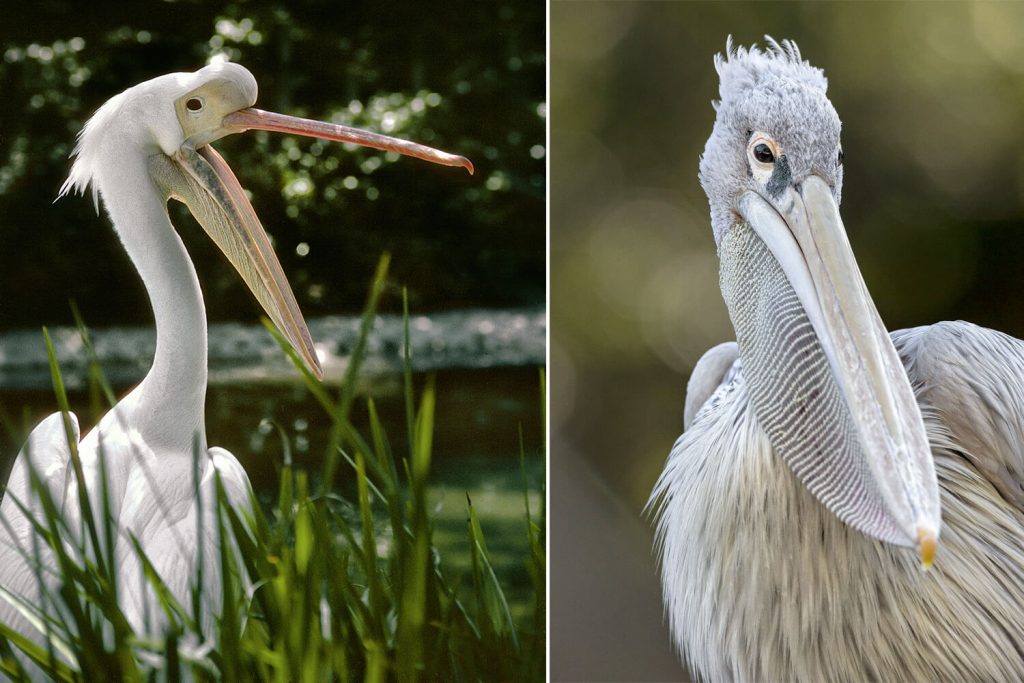
PELICAN PARTICULARS
(Left): Once the first egg is laid, a pelican’s pre-laying knob, seen on this great white pelican, starts to deflate, and the facial skin’s breeding color gradually goes back to pinkish-purple; (Right): Delicate yet durable, the pelican’s bill, seen on this great white pelican, is one of the avian world’s biggest wonders.
Pink-backed Pelicans can be viewed in the Nairobi Village lagoon. This season, two chicks were hatched and raised on the island with the shoebills. They have since fledged and are learning the ropes from the rest of the flock.
All of the keepers are fond of pelicans and appreciate the beauty and strength these water birds have to offer. And people who haven’t taken the time to notice? Well, they’ve simply missed the boat.

